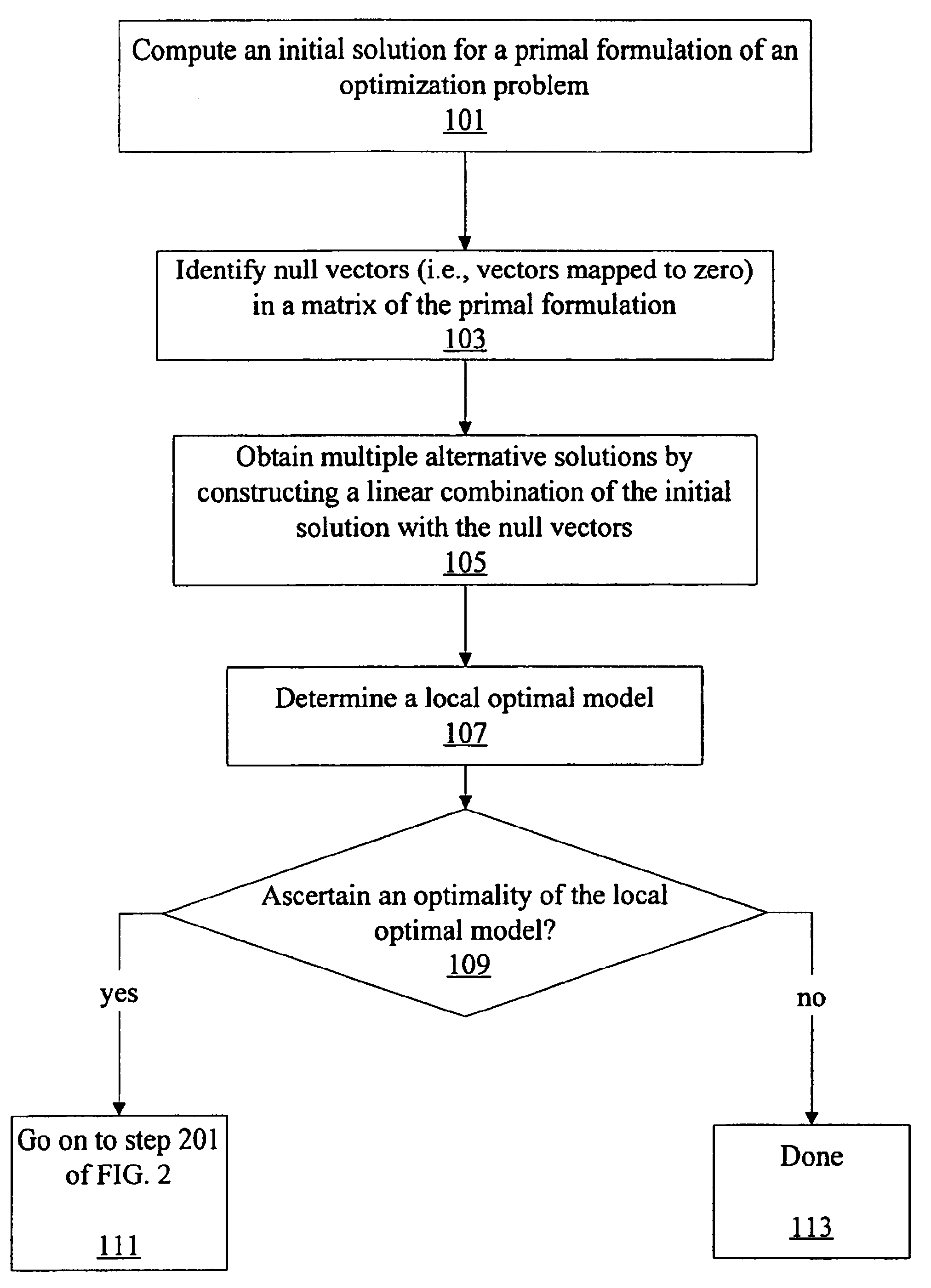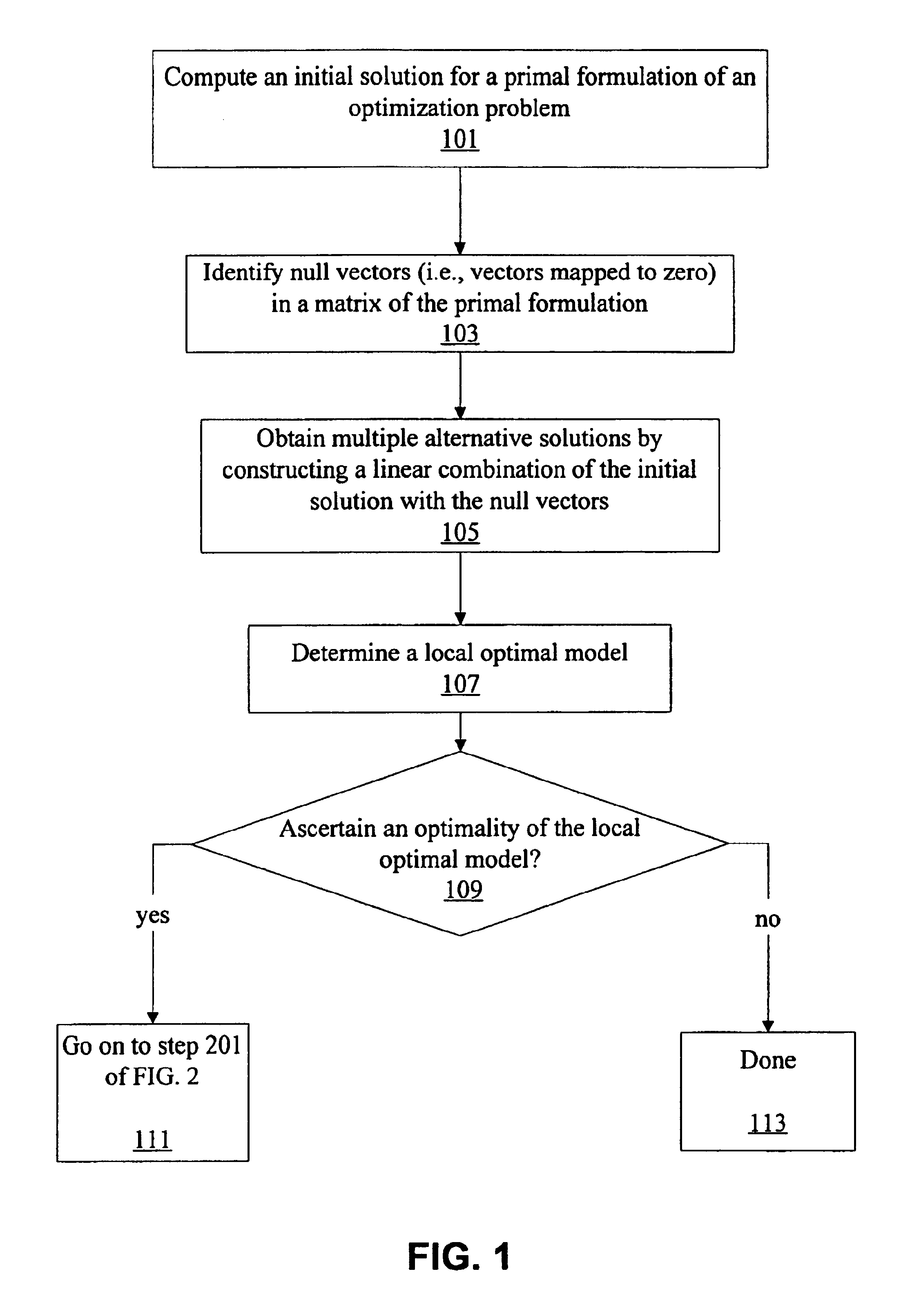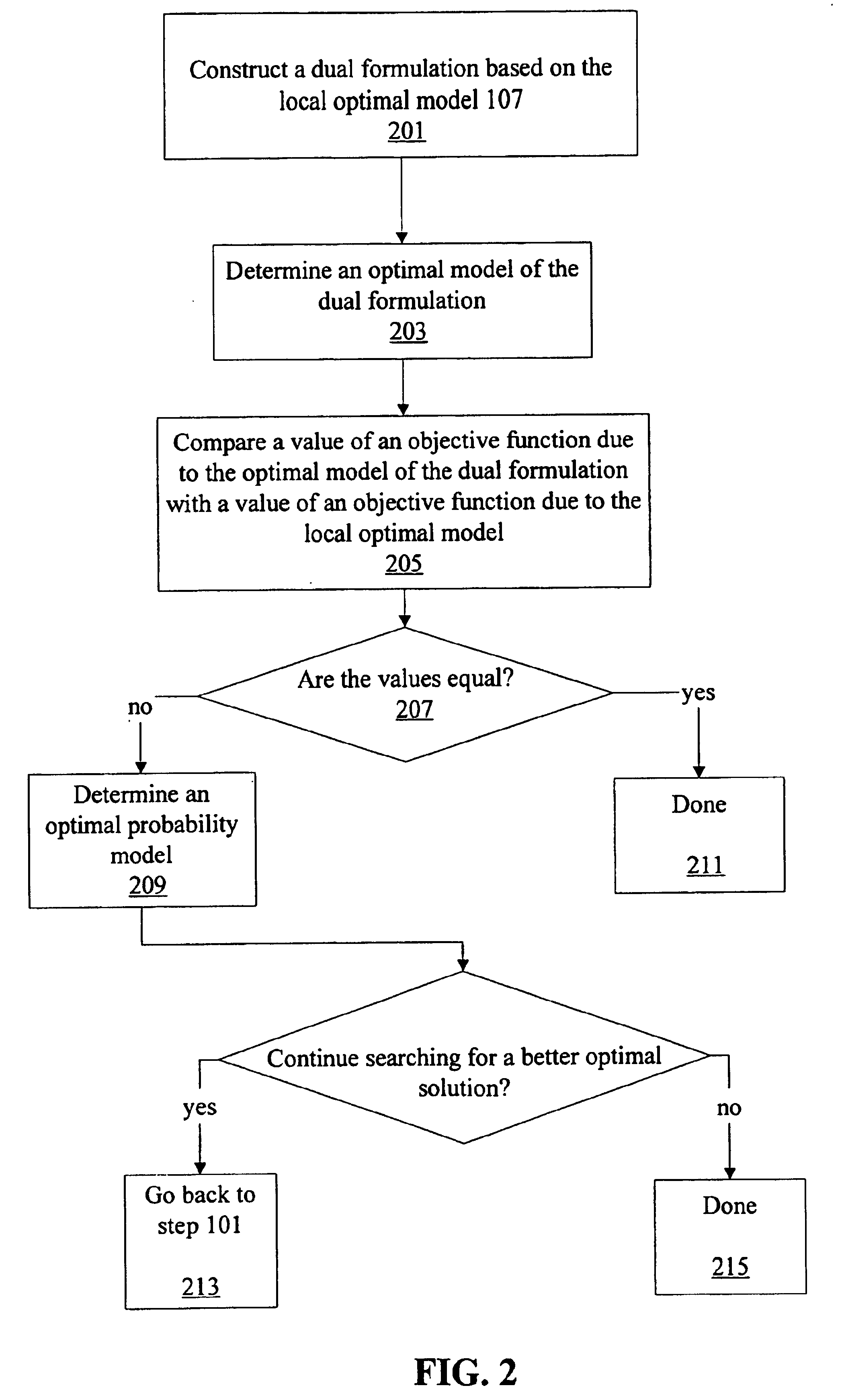Probability model selection using information-theoretic optimization criterion
a probability model and optimization criterion technology, applied in the field of computer processing, can solve the problems of not being useful to assist investors in making decisions, difficult to choose robust optimization methods, and difficult to solve probability model selection problems, etc., to achieve the effect of reducing additional computation costs
- Summary
- Abstract
- Description
- Claims
- Application Information
AI Technical Summary
Benefits of technology
Problems solved by technology
Method used
Image
Examples
example a
[0027]{X1:0,1},{X2:0,1},and P0=Pr(X1:0,X2:0),P1=Pr(X1:0,X2:1),P2=Pr(X1:1,X2:0),P3=Pr(X1:1,X2:1),
[0028]Give expert testimony as follows:
P(x1:0)≦0.65P0+P1+S=0.65 ∃S≧0
P(x2:0)=0.52P0+P2=0.52
ΣiPi=1.0P0+P1+P2+P3=1.0
[0029]Its primal formulation is shown below: [110011010011110][P0P1P2P3S]=[0.650.521.00]⇔Ax_=b_
[0030]In general, a probability model with n probability terms, v inequality constraints, and w equality constraints will result in a constraint matrix A with size (v+w)(n+v). In the example just shown, n=4, v=1, and w=2.
[0031]A feasible solution is preferably obtained for the primal formulation using any available existing solutions, or for example, by any of the numerical methods proposed by Kuenzi, Tzschach, and Zehnder (Kuenzi H. P., Tzschach H. G., and Zehnder C. A., 1971, “Numerical Methods of Mathematical Optimization,” New York, Academic Press). Another feasible solution is preferably obtained by applying, for example, the Singular Value Decompositi...
example b
[0048][1111000101010001100101010001][X0X1X2S0S1S2S3]=[log 0.2975log 0.24log 0.2225log 0.24]⇔ATλ_≤c_subject to maximizing bTλ;where c_T=[log 0.2975 log 0.24 log 0.2225 log 0.2]b_T=[0.65 0.52 1.0]
[0049]Note that the column corresponding to the slack variables (i.e., the last column in A of the primal formulation corresponding to the variable(s) S) is preferably dropped in the dual formulation since it does not contribute useful information to estimating the optimal bound of the solution. In addition, the optimization problem defined in this dual part comprises linear order constraints and a linear objective function.
[0050]However, certain issues exist in solving the dual part. It is not sufficient just to apply SVD to solve for ATλ≦c because a legitimate solution requires non-negative values of Si(i=0,1,2,3) in the solution vector of λ. In the above Example B, although there are four equations, there are only three variables that can span over the ...
PUM
 Login to View More
Login to View More Abstract
Description
Claims
Application Information
 Login to View More
Login to View More - R&D
- Intellectual Property
- Life Sciences
- Materials
- Tech Scout
- Unparalleled Data Quality
- Higher Quality Content
- 60% Fewer Hallucinations
Browse by: Latest US Patents, China's latest patents, Technical Efficacy Thesaurus, Application Domain, Technology Topic, Popular Technical Reports.
© 2025 PatSnap. All rights reserved.Legal|Privacy policy|Modern Slavery Act Transparency Statement|Sitemap|About US| Contact US: help@patsnap.com



